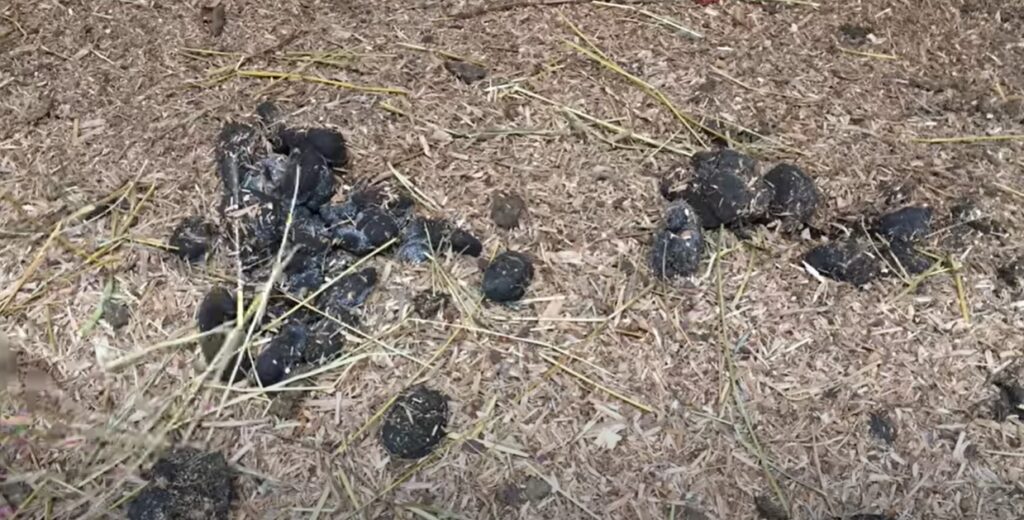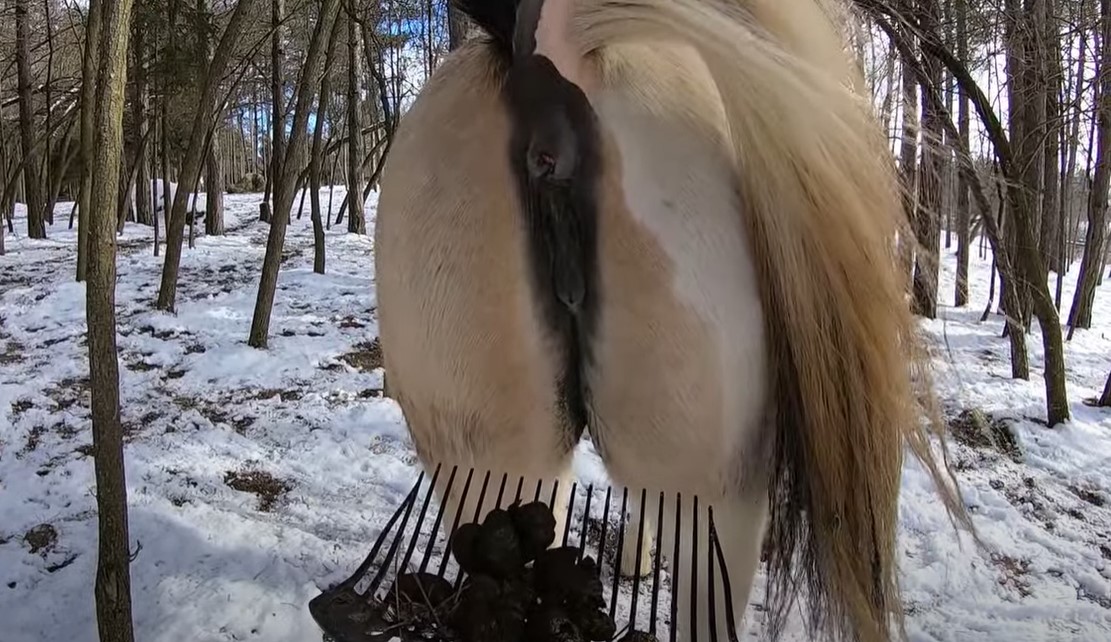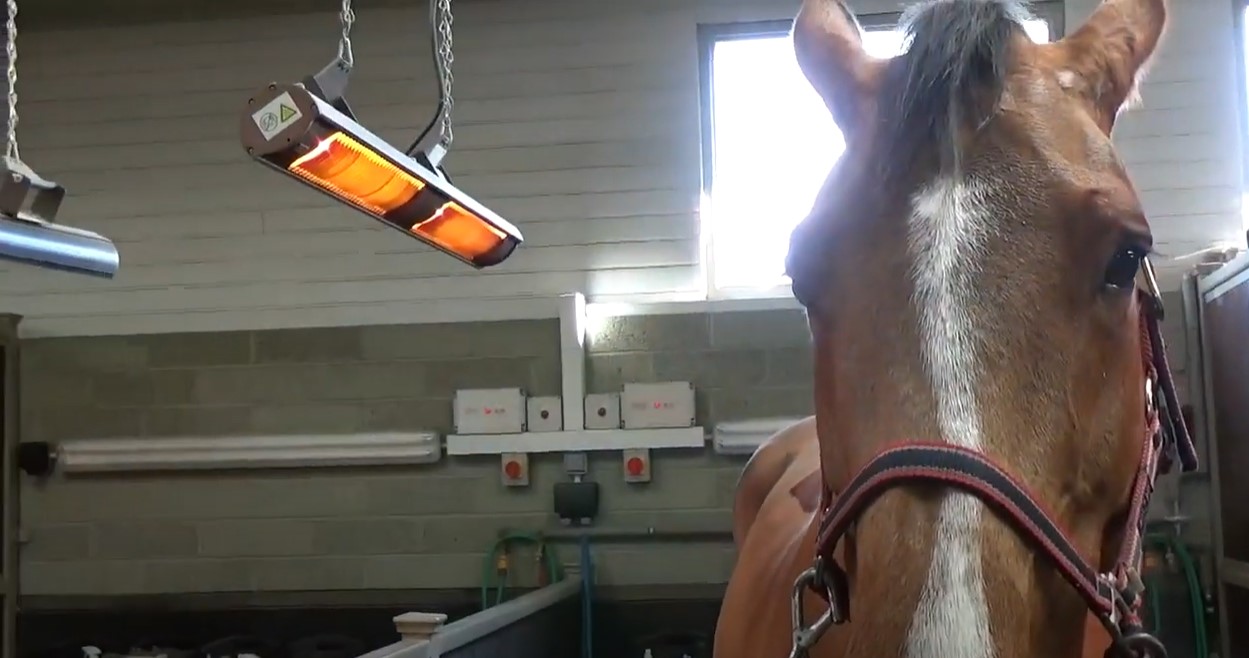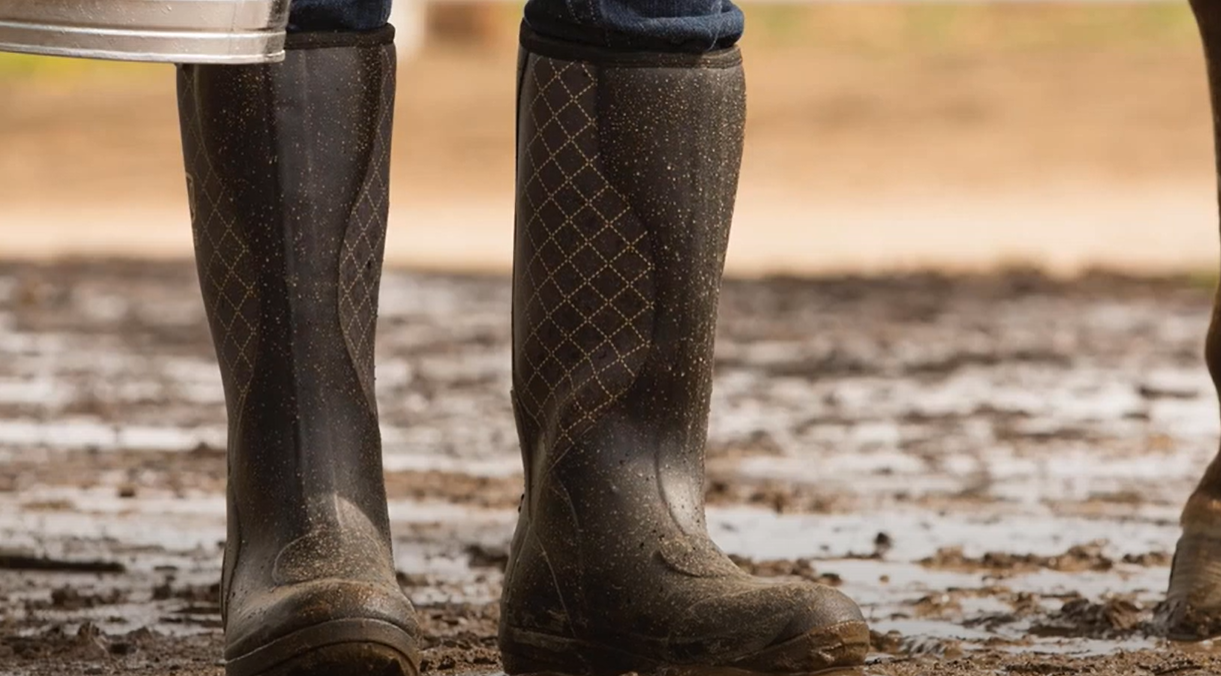Producing an average of 50 pounds of manure a day, your horse might have you shoveling and cleaning 24/7. But before you toss out that steaming pile of manure, did you ever consider giving it a gander? That heap of horse poop might provide valuable insight on your horse’s overall health and well being.
Even more interesting, horse stool presents a variety of uses that might just help you cut back on some of the costs around your farm. Don’t believe it? Here’s a quick guide on equine excrement and the many wonderful things you can learn from and do with it.
How Do Horses Produce Poop? The Process of Manure Production
Fact: it takes a horse about 36 to 72 hours to turn whatever it eats into poop aka horse apples. The whole process starts when the horse takes food into its mouth. As the animal chews, the horse’s saliva starts to break down the food matter. This initial step works to turn feed, grains, or roughage into more manageable, digestible particles.
A horse will naturally produce more saliva if it were chewing on hay or roughage (learn about how much hay to feed a horse). This helps break down the food matter more effectively, and prevents gastric ulcers. As your horse swallows, the food is brought to the stomach where it stays for about 15 minutes. Not much happens in this area aside from liquefying the food for easier absorption.
Next, the food enters the small intestine and then the large intestine. In these parts, micronutrients are absorbed and volatile fatty acids are formed from the process of fermentation. Essentially, the intestines take all of the nutrition they can from the food before the waste matter enters the colon.
Here, whatever is left of the food gets turned in to formed fecal balls, ready to pass out of the horse through the rectum.
Horse Poop Colors and What They Mean

It’s important to pay close attention to the color of horse chips. You can glean much about your horse’s intestinal conditions by checking in with the color of what they put out.
Green or Brown Horse Poop
Considered the typical color, green brownish sand colored horse manure demonstrates healthy, normal digestion. Remember that most of what your horse eats is green or brown, so it’s no surprise that fresh horse manure might showcase the same hues.
Horses that eat more high quality roughage and greens like alfalfa tend to have more saturated, green manure. Ordinary quality hay however might turn their stool into a slightly more brownish sand color. Remember hay is typically green, yellow and brown.
Black Stools
In some cases, your horse might expel intensely dark poop that almost looks black. This should raise the alarms as it may be indicative of a serious problem. According to experts, very dark stool may point to very poor nutrition or digestion.
More commonly however, black horse poop may also indicate a problem with the upper gastrointestinal tract, particularly bleeding caused by ulcers. As a horse owner, if you suspect that might be the cause, then it’s important to seek the attention of your trusted vet as soon as possible.
Suggested Read: Understanding Horse Nose Bleeds
Red Horse Poop
There are some instances when red stool might be normal. For instance, a horse that eats beet pulp or horses that eat berries might expel reddish brown manure. That’s perfectly fine. So it really pays to consider what your horse eats so you can trace back what might have caused the discoloration.
But if there isn’t anything your horse recently ate that might cause the reddish color of its stool, then you might want to consider calling your vet. Bright red stool could be indicative of injury in the lower GI tract.
Yellow Horse Poop
Most of the time, yellow poop isn’t actually yellow. If you pay close attention and really look at the droppings, you’ll find that it’s probably covered in a sort of sticky stringy coating that gives it a yellow tinge. This mucus forms around stool when it spends too much time in the gut.
Yellow poop discoloration is a common symptom of fecal impaction. This happens when stool gets stuck in the gut, preventing the smooth and easy passage of feces. In this case, it’s important that you visit your vet to get proper advice on how to resolve the issue.
If you feel that you can manage the problem at home, you may try to increase water intake and offer wet beet pump or bran mash to improve digestion and regularity.
Horse Poop Consistencies and Textures

Aside from colors, the textures of your horse’s manure may help you get a better understanding of what’s going on inside its body.
Soft, Moist, Formed
This is the normal, standard, healthy pile of horse buns and indicates that everything is a-okay from a digestive standpoint. The fecal balls might appear moist, and you might see a few strands of small, chewed up roughage in the mix.
Although the stool might look soft and moist, it should easily hold its shape even after you shovel it up from where it sits.
Hard, Compact
Dry, hard, compact lumps of stool are hard to pass and may cause constipation and colic for your horse. This often happens when your animal doesn’t drink enough water throughout the day. As a result, the body absorbs as much fluid as it can, resulting to very hard, dry manure.
To resolve the problem, simply offer your horse high fiber foods and more water. You might also want to consider mashing its feed or soaking its roughage in water to increase fluid intake throughout the day. You can also incorporate more vegetables into its diet like fresh beet pulp.
Providing more grazing time in the pasture might also improve his bowel conditions.
Soft, Unformed
It’s not normal for horses to poop cowpies. Unformed, loose piles that have no definite shape indicate that your horse might feel nervous or stressed. But if the issue doesn’t go away after a few days, then something more serious might be happening inside your animal’s gut.
Parasitic or bacterial infections may lead to consistently soft, unformed stool. If the problem persists, it’s imperative that you visit your vet to get proper treatment and medication for your horse and prevent further complications.
Liquid Horse Pucky
Soft or liquid manure has no form, and quite literally comes in the form of fluid. Loose stools indicate severe liquid diarrhea and is the first sign of infections or inflammation of the GI tract.
If your horse has a fever and shows other symptoms of illness, the situation might be life threatening and your vet may require various diagnostic tests. They might also ask for samples of the runny poop to identify the cause for the watery diarrhea.
However horses that don’t show any signs of illness may simply receive supportive treatment as the vet waits to see what might cause the problem. Whatever the case though, you may have to practice certain measures on your ranch to prevent that one horse from spreading infection to other horses.
Undigested Oats and Long Hay Fibers
It’s not necessarily a sign of a health issue, but old timey horse owners speculate that finding undigested grain fibers, weed seeds, and large chunks of discernable food matter in your horse’s poop might have something to do with the quality of the food you provide your animal.
To be fair though, horse poop doesn’t always appear uniform. Containing fibers, sand, shed cells, oats, and other fiber-rich particles, horse fecal matter may appear as a conglomerate of your animal’s diet, albeit obviously digested. Nevertheless, it’s still possible for horses to produce manure that doesn’t look digested enough.
Lower quality hay may be harder to digest and may even cause digestive upset.
Find Out: Can a Horse Vomit?
Generally, experts recommend stepping up feed quality. Others also speculate that large quantities of undigested food matter might be caused by poor oral and dental health.
How Often and How Much Should a Horse Poop?
The average, a horse poops 35-50 lbs of manure output a day and will poop between 4-12 times in a 24 hour period.
A horse defecates by setting its legs wide apart, raising its tail, and then straining to release its manure. When it’s all out, you’ll see the animal contract its rectum before going about its usual business. The whole process should take no more than 15-20 seconds.
If you’re finding less and less fresh manure, then your horse might not be eating enough. If your horse strains to poop but nothing comes out, they could be constipated or they might be suffering from feed impaction.
In whatever situation, it’s best that you seek veterinary attention to provide your horse proper care and nutrition.
Frequently Asked Questions
What are the uses of horse manure?
Horse manure is rich in vital minerals that help keep soil fertile. If you plan to use horse manure as fertilizer, make sure to spread the stuff in an area or pasture where your horses don’t graze. This keeps them from consuming their own excrement.
Manure tea works wonders to fatten up soil used for vegetable and flower gardens. Simply steeping the manure in water and using the resulting ‘manure tea’ to water your garden or farm can encourage more abundant growth.
Can horse poop be used as fuel?
Aside from fertilizer, horse manure can also be used as heating fuel. One innovative farmer used dried horse fecal matter which he formed into bricks to use as fuel for fires.
How much should a horse poop?
The average adult horse produces a total weight of between 35-50 pounds of manure a day at a rate of 4-12 times in a 24 hour period. Keep in mind though that lots of factors play a role in regularity including age, size, and your horse’s diet.
So horses can produce less or more manure depending on its unique living conditions and health status.
Why does my horse’s poop smell like rotten meat?
Horse manure changes odor depending on their diet. A diet high in carbohydrates will produce rancid smelling dung. Horses that eat too much protein on the other hand produce stools that smells of rotting meat.
Is it okay to leave poop on a shared trail?
No one’s going to cuff you for it. But for the sake of decency, it’s better to pick up horse excrement from a parking lot or shared public space if your steed just can’t help it.
The Scoop on Horse Poop
Keeping tabs on your horse’s manure can help you spot a potential health problem before it gets worse. From its color, to its consistency, to quantity, and everything in between, all of these dirty details tell you exactly what’s going on in terms of your horse’s health.
Plus, horse poop presents a number of practical uses. So before you toss out that heaping pile of horse hooey, try to consider the different areas on your farm that might benefit from your horse’s daily doodie.




